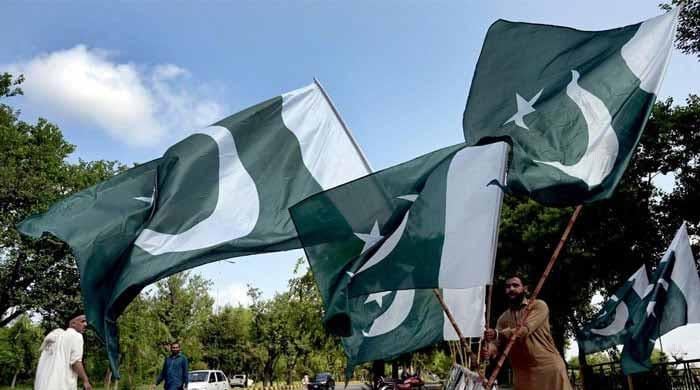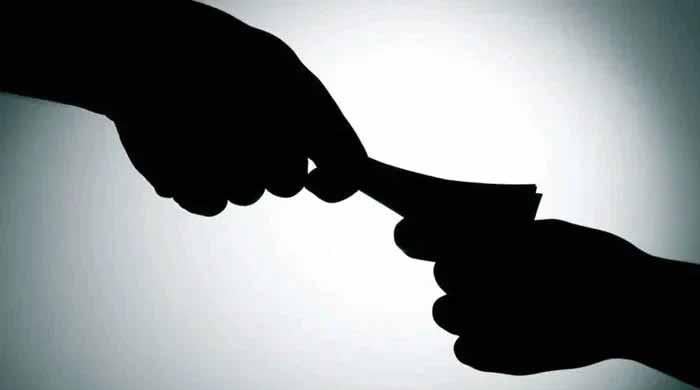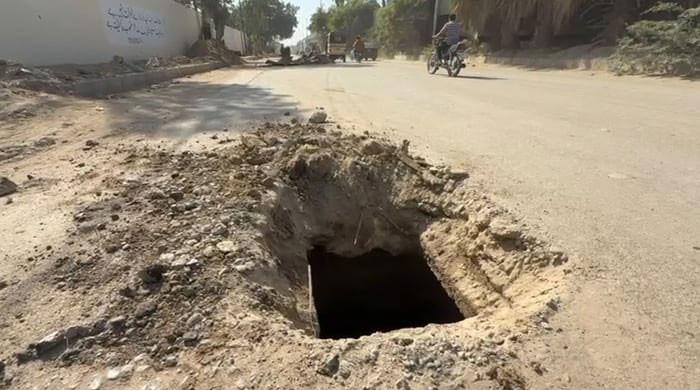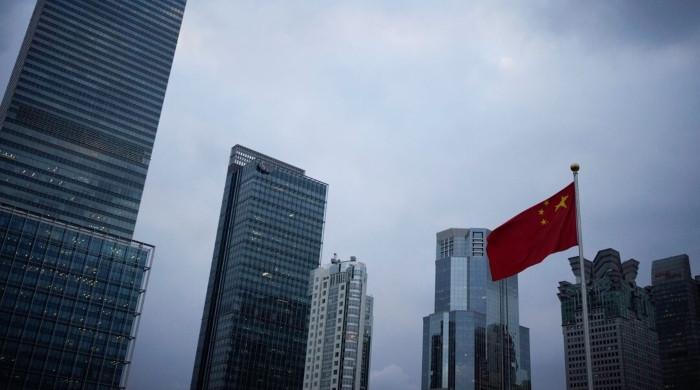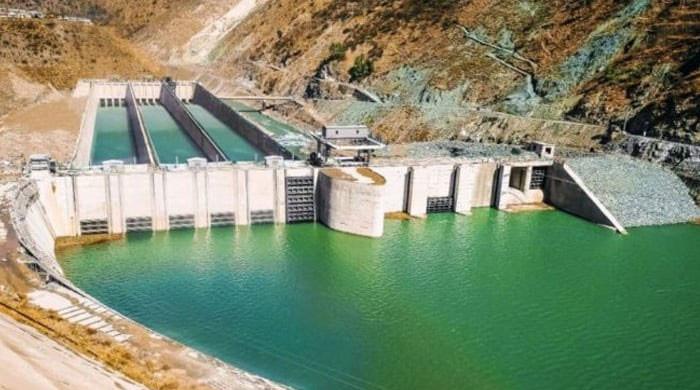PML-N and PPP: A marriage of inconvenience
Now both parties need to understand why PML-N failed in Sindh and PPP in Punjab
August 24, 2024
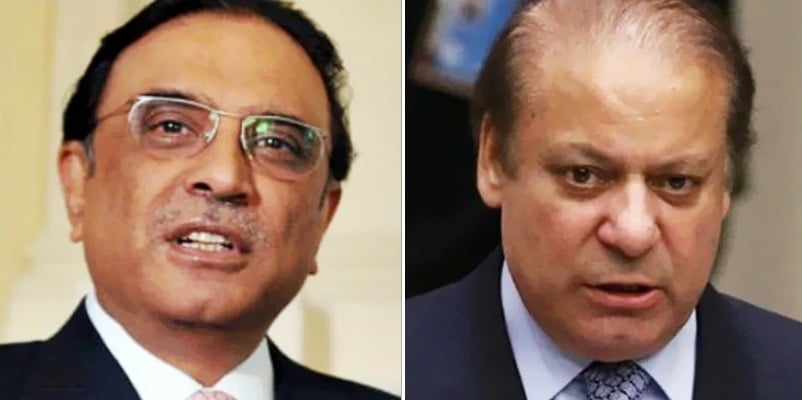
Pakistan Muslim League (PML-N) and Pakistan Peoples’ Party (PPP) have a history of ‘love and hate’ that dates back to the mid-80s, with the formation of Pakistan Muslim League (PML) after the non-party basis elections in 1985 under the umbrella of former military dictator General Zia ul Haq. The PML in its present form, i.e., PML-N, was an offshoot of the league led by the late prime minister Mohammad Khan Junejo after he was dismissed by Zia on May 28th, 1988.
Historically, the two sides have accepted each other as political realities and have worked on an ‘agree to disagree’ formula. Thus, Prime Minister Shehbaz Sharif invited PPP Chairman Bilawal Bhutto for a dinner-cum-meeting, which the latter accepted. The meeting ended on a cordial note, and the two sides agreed to implement the agreement signed between them at the time of the formation of the government at the centre and in the provinces. Surprisingly, both Chief Ministers of Punjab and Sindh, Maryam Nawaz and Syed Murad Ali Shah respectively, were absent.
The latest controversy between the two was triggered when Maryam announced relief on electricity bills for consumers in Punjab up to Rs14 per unit for those who use from 200 to 500 units. In reaction, the Sindh CM blamed the PML-N for introducing costly power plants decades ago and described the announcement of his counterpart as ‘naïve’ (without naming her). In a hard rebuttal, Maryam even accused the Sindh government of not doing much because the money goes into ‘their pocket.’
The two sides' decades-old relationship is a ‘marriage of inconvenience,’ as both know that their common rival, former premier Imran Khan, still has a popular base. For PML-N in particular, the only way forward for them is to have a cordial relationship, as they don’t have other options. But for the PPP, it's far more difficult as they have not been able to regain political ground, with or without PML-N, as, with the fading out of Bhutto’s charisma in Punjab, the PPP now has two political rivals: Pakistan Tehreek-e-Insaf (PTI) and PML-N.
The main purpose behind the establishment's move in the 80s was to back a ‘political force’ to counter the rising ‘Bhutto phenomenon,’ which refused to die in Punjab even after the execution of former Prime Minister Zulfiqar Ali Bhutto. The PPP was not able to form a government on its own in the most populous province since the 1970 elections. However, it took almost 40 years before the PPP nearly ‘vanished’ after 2008 and has never been able to stage a comeback, even when they decided to ‘shake hands’ with Zia’s cronies like the Chaudhrys of Gujrat (who too are divided now) or the likes of former Punjab chief minister, Mian Manzoor Wattoo.
The PML-N, on the other hand, gained ground and consolidated its position in Punjab ever since Nawaz Sharif was elected as Punjab chief minister for the first time in 1985 and retained this position even after Junejo’s dismissal, as he sided with Zia instead of Junejo.
However, Sharif emerged as Punjab’s strongman after the formation of Islami Jamhoori Ittehad (IJI) in 1988, an alliance of nearly a dozen anti-PPP parties that contested elections against the PPP. It was the beginning of the real ‘political tussle’ between former premier Benazir Bhutto and Nawaz Sharif, or the two major political rivals, i.e., PML-N and PPP.
Thus, from 1988 to 2008, this sharp political divide existed and, with time, turned into political rivalries between Sindh and Punjab. It was only after another military dictator, General Pervez Musharraf, overthrew Nawaz’s government on October 12, 1999, that the move was even welcomed by Benazir Bhutto on the condition that elections would be held soon.
However, Musharraf, in the name of ‘accountability,’ targeted both Nawaz and Benazir. In the aftermath of his trial and conviction, Nawaz left the country along with his family in what is regarded as a ‘deal’ with Musharraf to remain out of politics for 10 years. The deal was signed in 2000 after the military ruler’s government threatened Nawaz with a death sentence as they filed an appeal for enhancement of the sentence from life to death in the Sindh High Court.
Benazir, who was also living in ‘self-exile,’ was forced to stay out of the 2002 elections as her nomination papers were rejected, paving the way for a “minus Nawaz and Benazir” formula, which made way for new entrants into politics, such as Imran Khan, a cricketing hero, as a third option. In Punjab, the Chaudhry brothers did with the Sharifs what the latter did with Junejo, and they sided with Musharraf and formed their faction of the Pakistan Muslim League-Quaid-e-Azam (PML-Q).
It was at this stage that both Benazir and Nawaz realised they had been ‘used’ by the powerful quarters against each other and finally agreed, after two years of contact and negotiation, on a landmark agreement called the Charter of Democracy (COD). It was almost a new beginning between the two arch-political rivals and their ‘love and hate’ relationship. Had the two sides enforced the COD in its true spirit, Pakistan’s political dynamics would have been different. Musharraf remained a powerful ruler, but it was in March 2007, when his decision to remove the then chief justice of Pakistan (CJP), Iftikhar Mohammad Chaudhry, triggered a new wave of protest, this time led by lawyers and the deposed chief justice himself, a unique phenomenon in our political and judicial history.
From the 2006 COD to the 2008 Bhurban Declaration (over the restoration of deposed CJP Chaudhry), the two sides reached agreements but often backed out. The latest controversy also relates to the non-implementation of yet another agreement in the post-February 8, 2024, general elections, particularly related to Punjab.
Their ‘love and hate’ relationship can also be judged by the fact that in 2008, PML-N pulled out from the PPP-led coalition government, and the PPP also quit the Pakistan Democratic Movement (PDM) in 2020 over disagreements between Nawaz Sharif and Asif Zardari about ‘resignation’ from the National Assembly before the long march against the PTI government.
While the PPP has long tried hard to regain its past political position in Punjab, which was captured by PML-N, the biggest task for the ruling party today is how to regain its 2017 position, which they lost in the last elections, generally regarded as ‘rigged.’ While PML-N is finding it hard so far, despite being in government both at the centre and in Punjab, the dilemma of the PPP is its considerable decline in the big province, despite their desperate attempt to stage a comeback. PML-N and the Sharifs' biggest political blunder in losing Punjab has been its decisions: firstly, Nawaz’s long absence from Pakistan from 2021 to 2024, and secondly, taking the government after a vote of no confidence, and Shehbaz not delivering.
Unfortunately, instead of trying to stage a political comeback, the PPP has long used pro-establishment cronies for the formation of the government, either through the likes of the Gujrat’s Chaudhrys — who themselves are now divided between Chaudhry Shujaat and Chaudhry Pervez Elahi — or people like former CM Manzoor Wattoo. The PPP once had stalwarts like Dr Mubashir Hasan, Meraj Khalid, Sheikh Rafiq, Sheikh Rasheed, Fakhr Zaman, Jehangir Badar, and others when Benazir Bhutto returned in 1986. Today, the PPP hardly has leaders of that stature, despite the presence of people like Qamar Zaman Kaira, Nadeem Afzal Chan, or Chaudhry Aitzaz Ahsan, besides Raja Pervez Ashraf and Yusuf Raza Gillani and their sons. Instead of trying to stage a comeback through political work, the PPP is trying to get a few ministries, advisers, and governors.
The PPP and PML-N created history when they agreed to form a coalition government in 2008, and they also agreed that as soon as the government was formed, the deposed CJP Iftikhar Chaudhry would be restored. Though PML-N was reluctant to take an oath with Gen Musharraf, who was still the president of the country, Asif Ali Zardari convinced Nawaz that the general would quit; otherwise, he could face ‘impeachment.’
Unfortunately, the coalition did not last long, and when Zardari’s government did not restore Iftikhar Chaudhry, the PML-N quit the coalition government. This led to a new tussle: on the one hand, Nawaz announced a ‘long march’ for the restoration of Chaudhry, and on the other, the PPP’s federal government imposed ‘governor’s rule’ in Punjab. Ultimately, the centre succumbed to the pressure, and Chaudhry was restored, while the superior court declared ‘governor’s rule’ illegal. Both these decisions were a major setback for the PPP.
The last major showdown between Nawaz and Zardari was in December 2020, when Imran Khan was the prime minister and the opposition alliance, PDM, decided to go ahead with a ‘Long March,’ but differences emerged between the two over ‘resignation’ from the National Assembly. Nawaz and Maulana Fazl ur Rehman wanted the resignation of MNAs before the march, but Zardari was of the view that the decision should be taken after reaching Islamabad. Finally, the PPP parted ways with the PDM but continued its support against the PTI.
They joined hands again in 2022 after they voted out Imran Khan as prime minister on April 10th, 2022 in a no-trust motion, and since then, they have been ‘partners’ under a power-sharing formula, one of the reasons being the threat of the PTI and Imran Khan.
As the political battles and rivalries now transfer from one generation to another, the way forward could be the new ground realities and challenges. With the future political leadership now being transferred from Zardari to Bilawal and from Nawaz to Maryam, the two may not gain much if they continue following the past turbulent political legacy. The PPP and PML-N both have different political ideologies and a very popular and unconventional political rival, Imran Khan — who has already proven both of them wrong by completing his one year in prison.
They need to revisit their respective political strategies to understand why PML-N was never able to win in Sindh and, at the same time, why the PPP could not make inroads in Punjab and regain its lost popularity. Living in a ‘marriage of convenience’ may not hurt each other, but it is unlikely to benefit them in this political cycle. Politics is a game of opportunities, which the PTI made the most of in Punjab in the absence of Nawaz in Pakistan and due to the poor performance of Prime Minister Shehbaz Sharif.
Writer is a columnist and analyst for GEO, Jang and The News
X:@MazharAbbasGEO




